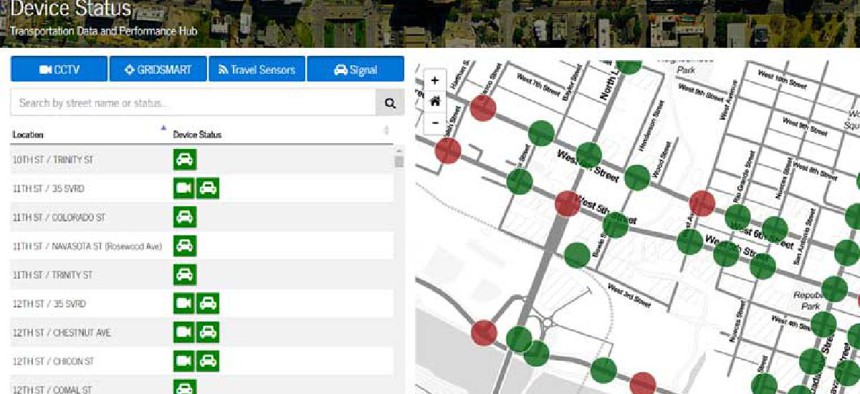Austin's one-stop shop for traffic management

The Austin, Texas, Department of Transportation’s Data and Performance Hub is designed to give both staff and citizens an inside look at signal operations citywide.
For years, Department of Transportation employees in Austin, Texas, responded to traffic signal issues using siloed systems that relied on spreadsheets and paper-based processes. As part of a shift to consolidate operations, the department built a series of dashboards so doing maintenance in the field would have access to all the information they need.
The Data and Performance Hub takes data from the city’s open data portal and surfaces the information relevant to traffic management. Users can monitor traffic signals, make signal requests and track signal projects and the city’s annual signal timing program.
“My team has been working closely with our colleagues who are on the front lines in the transportation management center and planning staff to determine what information would be most useful to them as they monitor the transportation system,” Austin DOT Senior IT Supervisor John Clary told GCN. “We’ve been letting them drive the needs and development path of the dashboard.”
A key part of the portal development was determining how much information was suitable to share. Clary said it was important for his staff to make the information “useful and empowering but not overwhelming.”
To build the portal, the development team decided to take an open source approach and host the website and its code on GitHub. The maps and data visualizations in the portal are created using Javascript, and the majority of the information comes from the city’s extensive open data portal that has over 400 sourced datasets from various city departments and offices.
Information is kept current in the traffic portal through Python scripts that check for updates in Austin’s traffic systems every two minutes and push the data into the information hub. All of the data is also available for download, making it easy for users to leverage the information for their own projects.
“We want to let the public know all of the work that we are doing around signal timing and everything else,” Clary said. “If the public knows what we are doing, [that] helps us to stay accountable for our work.”
As staff and public get adjusted to the open data platform, the department has plans to make more data available, including information on street signs, pavement markings and parking availability.





